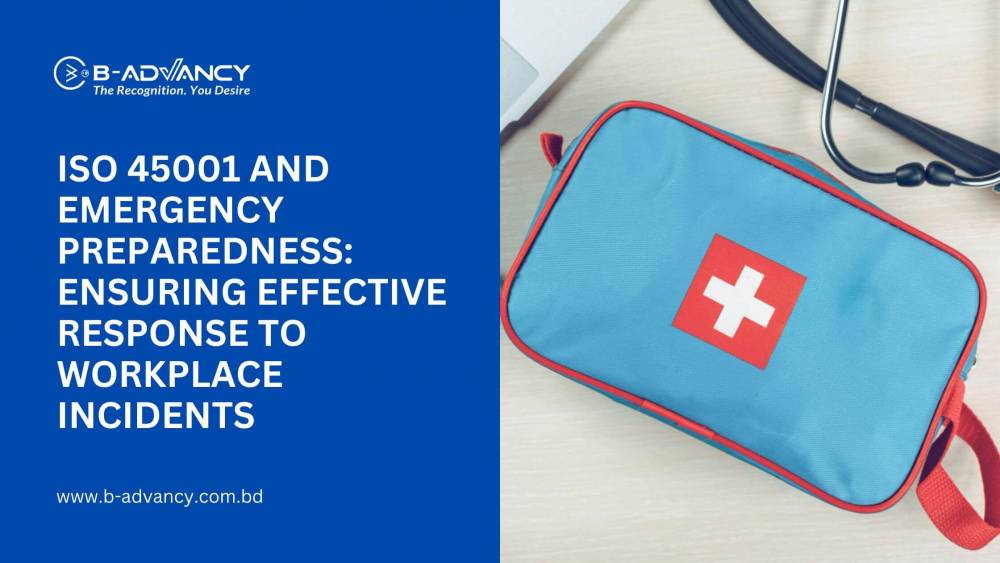Workplace safety is of paramount importance for any organization, regardless of its size or industry. In today's world, where there are more occupational hazards than ever before, it's crucial for companies to take proactive steps to ensure the safety of their employees. One way to achieve this is by implementing ISO 45001, an international standard for occupational health and safety management systems. In this blog post, we'll explore how ISO 45001 can improve workplace safety and reduce accidents, with supporting examples, real-world statistics, and case studies.
Understanding ISO 45001
ISO 45001 is an international standard that provides a framework for managing occupational health and safety risks. It was developed by the International Organization for Standardization (ISO) and published in March 2018. This standard replaces the previous OHSAS 18001 standard and is applicable to organizations of all sizes, industries, and geographical locations. The main objective of ISO 45001 is to help organizations provide safe and healthy workplaces for their employees and other stakeholders.
Implementing ISO 45001
Implementing ISO 45001 involves several steps, including:
Assessing and addressing safety risks in the workplace: Organizations must identify and assess the potential hazards and risks associated with their work activities and take steps to eliminate or control them.
Establishing safety objectives and targets: Organizations must set measurable targets and objectives for their safety management system, which should be regularly reviewed and updated.
Developing a safety management system: Organizations must establish and implement a safety management system that complies with ISO 45001 requirements, including policies, procedures, and protocols.
Training employees on safety procedures and practices: Organizations must provide adequate training and resources to their employees to ensure they are aware of the safety risks associated with their work and know how to mitigate them.
Establishing a culture of safety: Organizations must foster a culture of safety where employees are encouraged to report safety hazards and incidents, and safety is prioritized at all levels of the organization.
The Impact of ISO 45001 on Workplace Safety
Implementing ISO 45001 can have a significant positive impact on workplace safety. Some of the benefits of ISO 45001 include:
Reducing workplace accidents and injuries: ISO 45001 helps organizations identify and mitigate safety risks, which can lead to a reduction in workplace accidents and injuries. For example, a study by the European Agency for Safety and Health at Work found that companies that implemented ISO 45001 reported a 25% reduction in accidents.
Improving overall health and well-being of employees: By promoting a culture of safety and providing adequate resources and training, organizations can improve the overall health and wellbeing of their employees. This can lead to reduced absenteeism and improved job satisfaction. A study by the National Safety Council found that companies with a strong safety culture had a 51% lower absenteeism rate than those without.
Increasing productivity: By reducing accidents and injuries, organizations can increase productivity. A study by the Health and Safety Executive found that companies that implemented ISO 45001 reported a 7% increase in productivity.
Improving company reputation and stakeholder confidence: Implementing ISO 45001 can improve a company's reputation and stakeholder confidence. Customers, investors, and other stakeholders are increasingly concerned with workplace safety and are more likely to do business with companies that prioritize safety.
Challenges and Best Practices in Implementing ISO 45001
Implementing ISO 45001 can be challenging, especially for organizations that are new to safety management systems. Some of the common challenges include:
Lack of resources and expertise: Implementing ISO 45001 requires a significant investment of resources and expertise, which can be a challenge for some organizations.
Resistance to change: Implementing ISO 45001 may require changes to existing work practices, which can be met with resistance from employees.
Lack of management
However, with proper planning and execution, these challenges can be overcome. Some best practices for successfully implementing ISO 45001 include:
Top-down support: Management support is critical to the success of ISO 45001 implementation. Leaders must be committed to creating a culture of safety and providing the necessary resources to achieve this.
Employee involvement: Employees play a critical role in implementing and maintaining ISO 45001. Organizations should involve employees in the process, provide them with adequate training, and encourage them to report safety hazards and incidents.
Continuous improvement: ISO 45001 is an ongoing process that requires continuous improvement. Organizations should regularly review and update their safety management system to ensure it remains effective and relevant.
Case Studies
Several organizations have successfully implemented ISO 45001 and seen significant improvements in workplace safety. One example is the oil and gas company ENI, which implemented ISO 45001 across its global operations. As a result, ENI reported a 38% reduction in accidents and injuries in the first year of implementation.
Another example is the construction company Skanska, which implemented ISO 45001 in its operations across Europe. Skanska reported a 34% reduction in accidents and a 43% reduction in lost-time injuries in the first year of implementation.
Real-world Statistics
Real-world statistics highlight the importance of workplace safety and the impact of implementing ISO 45001. For example:
According to the International Labour Organization (ILO), there are approximately 2.78 million work-related deaths annually, and 374 million non-fatal work-related injuries and illnesses.
The European Agency for Safety and Health at Work found that companies that implemented ISO 45001 reported a 25% reduction in accidents.
The Health and Safety Executive found that companies that implemented ISO 45001 reported a 7% increase in productivity.
Conclusion
In conclusion, workplace safety is crucial for organizations, and implementing ISO 45001 can help improve workplace safety and reduce accidents. By assessing and addressing safety risks, establishing a safety management system, training employees on safety procedures, and fostering a culture of safety, organizations can see significant improvements in workplace safety, employee wellbeing, productivity, and reputation. Although there may be challenges in implementing ISO 45001, organizations that commit to the process and follow best practices can achieve success and reap the benefits of a safer workplace.



























































































































































































